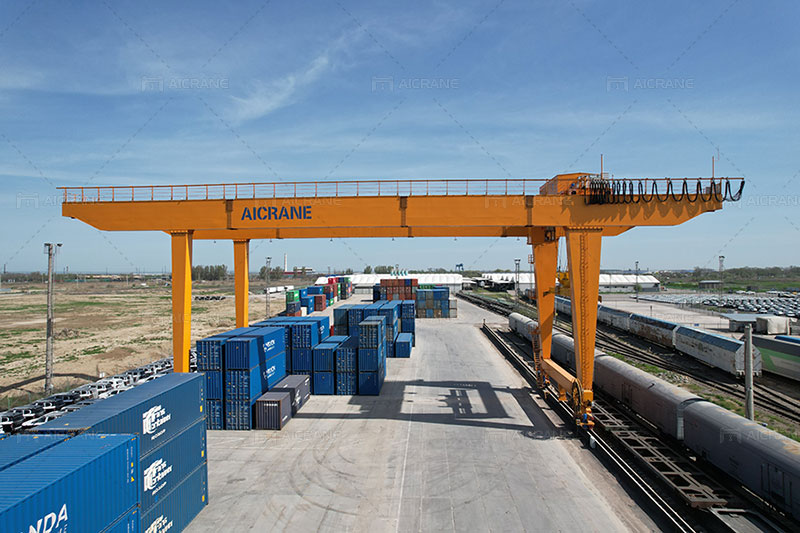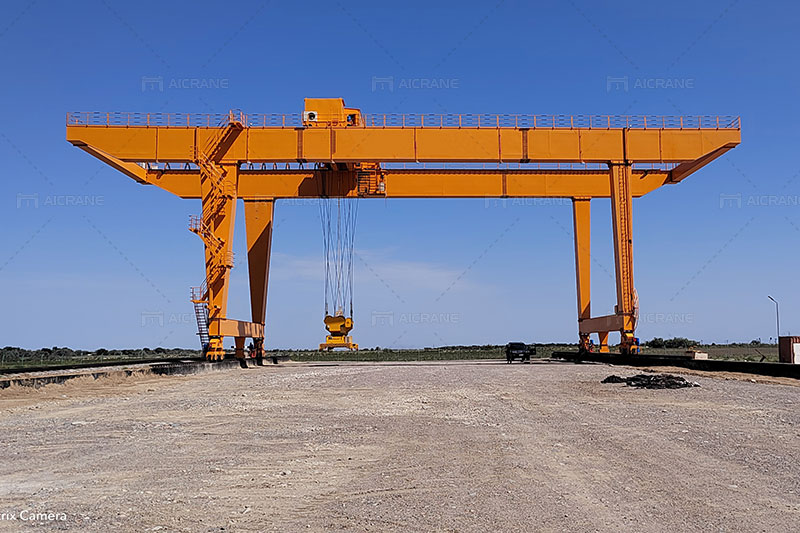Gantry cranes are pivotal in modern ports and container yards, where they play a crucial role in managing and moving shipping containers. Handling containers efficiently and safely is essential for maintaining the flow of goods and ensuring operational efficiency. Whether you are a seasoned operator or new to the role, here are some detailed tips for operating gantry cranes effectively for container handling.

1. Understand the Equipment and Its Capabilities
Before operating a gantry crane for container handling, it is essential to thoroughly understand the equipment and its capabilities. This includes knowing the crane’s lifting capacity, span, height, and reach. Familiarize yourself with the manufacturer’s specifications and ensure you are aware of any limitations or restrictions. Proper understanding helps in avoiding overloading and potential accidents.
2. Pre-Operation Inspection
Conducting a pre-operation inspection is crucial to ensure the crane is in safe working condition. Check the following:
- Structural Integrity: Inspect the crane’s structure for any signs of wear, damage, or deformation.
- Lifting Mechanism: Examine the ropes, chains, and hooks for any signs of fraying or damage.
- Hydraulic System: Check for leaks or malfunctions in the hydraulic system.
- Controls and Instrumentation: Ensure that all controls and instruments are functioning correctly and are calibrated.
- Safety Devices: Verify that all safety devices, such as limit switches and emergency stop buttons, are operational.

3. Proper Training and Certification
Ensure that operators are properly trained and certified to operate RMG cranes. Training should cover both theoretical knowledge and practical skills. Certification ensures that operators understand the complexities of gantry crane operation, including safety procedures and emergency protocols. Continuous training and refresher courses can help maintain high standards of safety and efficiency.
4. Safety First
Safety is paramount when operating gantry cranes. Follow these safety guidelines:
- Wear Personal Protective Equipment (PPE): Operators should wear hard hats, gloves, safety glasses, and other necessary PPE.
- Follow Safety Protocols: Adhere to established safety protocols and procedures for crane operation. This includes proper signaling and communication with ground personnel.
- Maintain Clear Communication: Use radios or hand signals to communicate with other team members, especially when moving large containers.
- Avoid Overloading: Never exceed the crane’s rated capacity. Overloading can lead to equipment failure and accidents.
5. Load Handling Techniques
Proper load handling is essential for efficient and safe container operations. Consider the following techniques:
- Center of Gravity: Ensure that the container’s center of gravity is aligned with the crane’s lifting point to prevent tipping or swinging.
- Use Proper Slings: Select the appropriate type and length of slings or lifting attachments for the container being handled.
- Stabilize the Load: Use spreader bars or lifting beams to stabilize the load and distribute weight evenly.
- Slow and Steady Movements: Operate the crane at a controlled and steady speed to avoid sudden movements that can cause the load to swing. To learn more about gantry cranes, view the product page: https://aicraneliftingsolution.com/gantry-cranes/
6. Effective Container Positioning
Precise container positioning is vital for efficient handling and minimizing the risk of accidents. Follow these tips:
- Align with the Container: Ensure that the crane’s spreader or lifting device is properly aligned with the container’s corner castings.
- Use Positioning Systems: Utilize onboard positioning systems or guides to aid in accurate container placement.
- Avoid Obstructions: Ensure that the path of the crane is clear of obstructions, including other containers, equipment, and personnel.
7. Weather Considerations
Weather conditions can significantly impact crane operation. Be aware of the following:
- Wind: High winds can cause containers to sway and make handling difficult. Check weather forecasts and avoid operating the crane in strong winds.
- Rain: Rain can create slippery surfaces and affect visibility. Use caution when operating in wet conditions and ensure that the crane’s control systems are dry and functional.
- Extreme Temperatures: Extreme cold or heat can affect the crane’s mechanical systems. Monitor for any signs of performance issues related to temperature changes.
8. Regular Maintenance
Regular maintenance is essential for ensuring the long-term reliability and safety of the Aicrane gantry crane. Follow a scheduled maintenance program that includes:
- Routine Inspections: Conduct regular inspections of all crane components, including the hoist, ropes, and electrical systems.
- Lubrication: Ensure that moving parts are properly lubricated to reduce wear and tear.
- Repairs: Address any issues or repairs promptly to prevent further damage and maintain optimal performance.
9. Emergency Procedures
Being prepared for emergencies is crucial for ensuring safety. Operators should be familiar with emergency procedures, including:
- Emergency Stop: Know how to quickly and safely stop the crane in case of an emergency.
- Evacuation Plans: Be aware of evacuation routes and procedures in the event of a serious incident.
- Incident Reporting: Report any accidents or near-misses to the appropriate authorities and conduct investigations to prevent future occurrences.
10. Continuous Improvement
Lastly, strive for continuous improvement in crane operations. Regularly review performance metrics and seek feedback from operators and maintenance personnel. Implement improvements based on lessons learned and industry best practices to enhance efficiency and safety.
Conclusion
Operating gantry cranes for container handling requires a combination of skill, knowledge, and adherence to safety protocols. By understanding the equipment, conducting thorough inspections, and following best practices, operators can ensure efficient and safe container handling operations. Regular training, maintenance, and attention to safety will contribute to the smooth and effective operation of gantry cranes, ultimately supporting the efficient flow of goods in ports and container yards.
